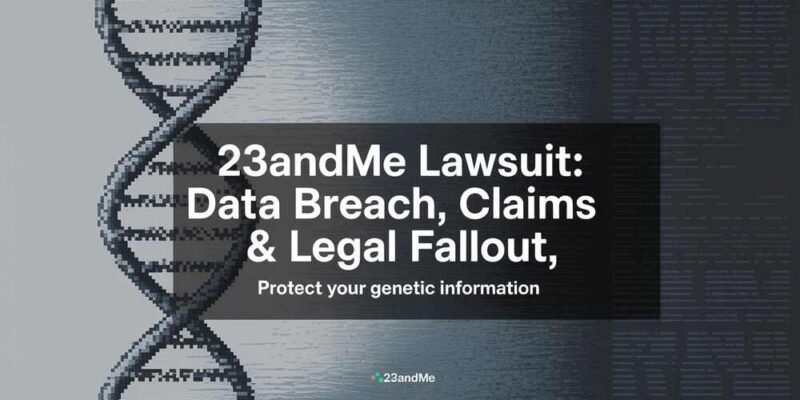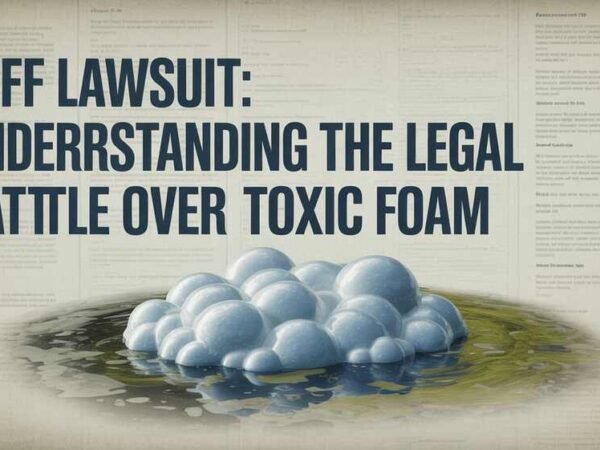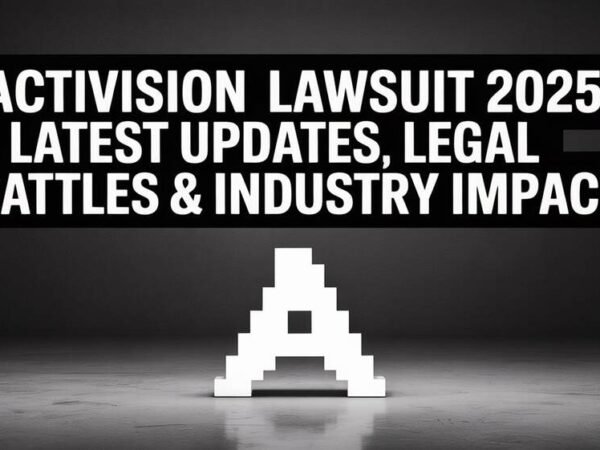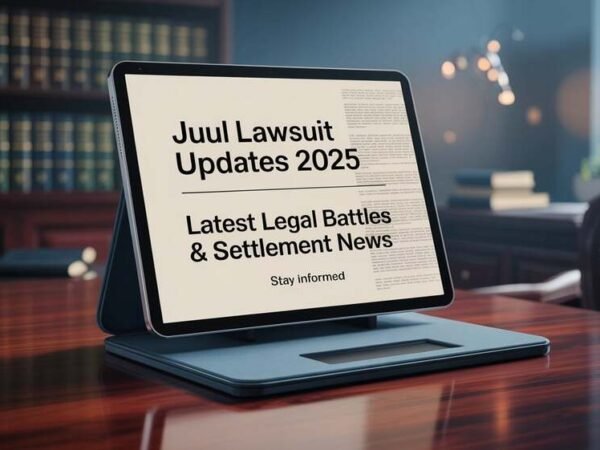Introduction to the 23andMe Lawsuit
The 23andMe lawsuit has rapidly evolved into one of the most closely watched legal battles in the tech and biotech industries. As a leader in consumer genetic testing, 23andMe offered customers the chance to uncover their ancestry, identify health risks, and connect with distant relatives using only a saliva sample. However, in 2023, a significant data breach exposed the sensitive personal and genetic information of nearly 7 million users. This cyberattack triggered customer panic and raised serious concerns about the company’s data protection practices. As class-action lawsuits mount and regulatory scrutiny intensifies, understanding the 23andMe lawsuit is essential for anyone who values genetic privacy, consumer rights, and the ethical handling of digital health data.
What Caused the 23andMe Data Breach?
At the heart of the 23andMe lawsuit lies a devastating cybersecurity failure. Hackers exploited a tactic known as credential stuffing, where previously leaked username-password combinations from unrelated data breaches were used to gain unauthorized access to user accounts. Although the breach was not due to a direct hacking of 23andMe’s infrastructure, the company failed to enforce essential security measures like two-factor authentication by default. Once inside, attackers leveraged the DNA Relatives feature to view the account holder’s data and information about their genetic matches. This magnified the scope of the breach, turning what could have been an isolated security incident into a massive privacy catastrophe.
Scope and Impact of the Breach
The impact of the data breach extended far beyond traditional privacy violations. More than 6.9 million users had their genetic information, family connections, ethnic background, and geographic data exposed. Particularly concerning was the targeting of specific ethnic groups, such as Ashkenazi Jews and individuals of Chinese descent, raising alarms about racial profiling and discrimination. The breach sparked widespread outrage from customers and privacy advocates alike, with many questioning how a company dealing with such sensitive data could operate with apparent cybersecurity blind spots. The scale and sensitivity of the leaked information amplified public backlash and catalyzed a wave of legal actions that would soon culminate in the current 23andMe lawsuit.
Legal Action and Class-Action Lawsuits
In the wake of the breach, 23andMe faced multiple class-action lawsuits across the United States. The central claim in these cases is that the company failed to implement reasonable cybersecurity protections, directly violating consumer trust and existing privacy laws. Plaintiffs allege that 23andMe failed to warn users promptly and did not take appropriate measures to secure their sensitive genetic data. A preliminary settlement of $30 million has been proposed to compensate affected customers, though this may vary based on the number of claimants and the final approval by the court. These lawsuits are not just about financial redress—they aim to hold 23andMe accountable for lapses in data stewardship and to set a precedent for other tech and biotech companies handling personal information.
Chapter 11 Bankruptcy: What It Means for Victims
Adding a new layer of complexity to the 23andMe lawsuit, the company filed for Chapter 11 bankruptcy protection in early 2025. This legal move allows them to restructure their debts and potentially delay certain financial obligations, including the pending class-action settlement. For victims, the bankruptcy introduces uncertainty around compensation and raises concerns about how their data will be handled during restructuring. To address these concerns, a court-appointed consumer privacy ombudsman was introduced to oversee data security practices during bankruptcy. This unusual legal arrangement highlights the delicate balance between corporate survival and consumer rights after a massive privacy breach.
23andMe Acquisition by Regeneron: A Game Changer?
In a surprising turn of events, biotech giant Regeneron Pharmaceuticals acquired 23andMe in May 2025 for $256 million through a bankruptcy auction. The acquisition excludes certain divisions like Lemonaid Health, which are now being phased out. Regeneron’s interest in 23andMe likely stems from its vast genetic database, which could enhance pharmaceutical research and development. For customers, the acquisition raises questions about how their data will be used under new ownership. Regeneron has pledged to honor existing privacy policies and maintain ethical standards, but skeptics remain cautious. Whether this acquisition restores public trust or intensifies privacy concerns remains to be seen.
Filing a Claim: Step-by-Step for Affected Users
For those affected by the breach, filing a claim in the 23andMe lawsuit is critical to seek justice and compensation. The claims process distinguishes between two primary categories: Cybersecurity Incident Claims and General Bar Date Claims. Affected users must submit documentation proving their account activity and breach impact. The deadline to file a claim is July 14, 2025, making timely action essential. Detailed instructions are available on the claims administration website, and legal support may be available for those needing assistance. Filing a claim ensures individual compensation and strengthens the collective push for corporate accountability.
Consumer Data Rights in Genetic Testing
The 23andMe lawsuit has brought renewed attention to consumer data rights in the age of genetic testing. Customers entrust companies like 23andMe with their most intimate information—DNA—and expect that data to be handled with the highest level of security. However, this breach has exposed the vulnerabilities in the current system. Users now have the right to request data deletion, revoke consent for data sharing, and demand transparency regarding third-party partnerships. The incident underscores the need for stronger data privacy legislation and reinforces the importance of user education when engaging with DNA testing services.
Broader Industry Reactions and Policy Shifts
The fallout from the 23andMe lawsuit has rippled across the genetic testing and health-tech industries. Competitors are reevaluating their data protection policies, and lawmakers are introducing new bills to regulate how genetic data is stored and shared. Regulatory bodies will likely tighten cybersecurity standards, data sharing consent, and corporate accountability. These shifts mark a turning point in how genetic testing companies operate and how seriously they must protect consumer data. The industry may become more transparent and secure, but only if these hard lessons are implemented through meaningful reform.
Conclusion: Lessons from the 23andMe Lawsuit
The 23andMe lawsuit is a wake-up call for both consumers and corporations. For consumers, it’s a reminder to be vigilant about the digital services they use and the data they share. For companies, it highlights the dire consequences of inadequate cybersecurity and the importance of transparency. As the legal proceedings continue and the acquisition by Regeneron unfolds, the future of 23andMe hangs in the balance. What’s certain, however, is that this lawsuit will leave a lasting legacy in privacy law, digital health, and genetic research. Protecting sensitive genetic information must become a non-negotiable priority in the age of personalized medicine.













